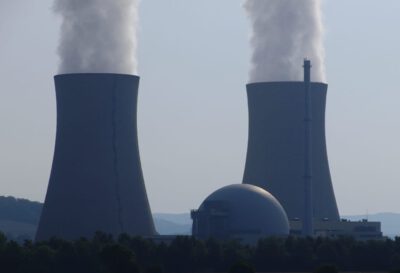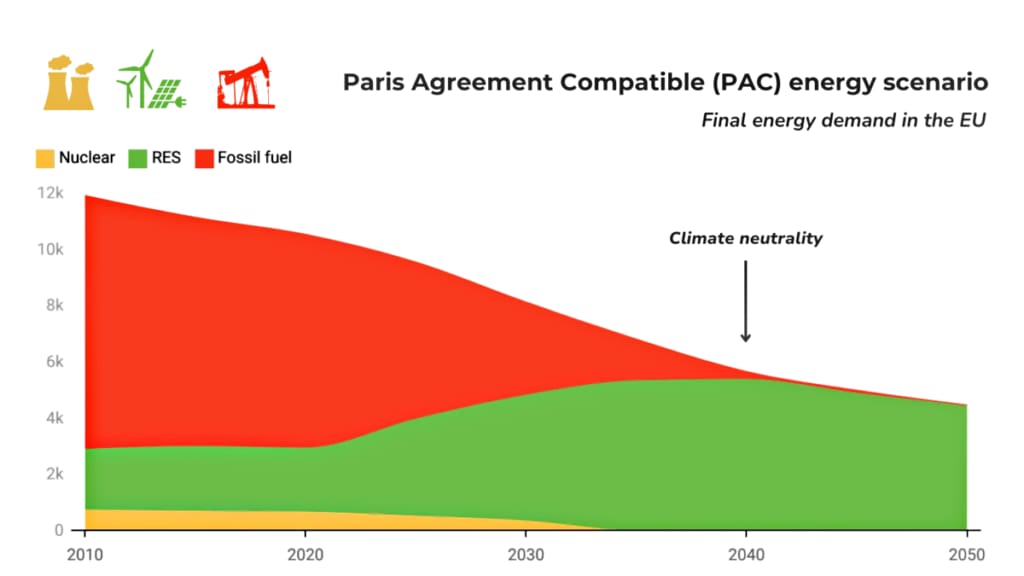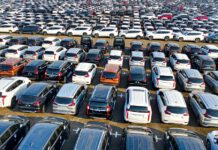
Renewables, energy savings, and flexibility options are positioned to replace nuclear power in the EU’s energy mix. A new EEB report highlights the feasibility of phasing out Europe’s ageing nuclear fleet and achieving climate neutrality by 2040.
Building new nuclear power plants remains an unrealistic strategy for decarbonisation due to high cost overruns and lengthy construction times. However, the debate over extending the lifetime of existing nuclear plants in the name of climate neutrality persists.
In response, the European Environmental Bureau (EEB) released a report showing that the existing nuclear fleet can be phased out alongside fossil fuels as EU countries transition to a drastically more efficient energy system, powered by renewables and backed by flexibility options.
“As renewables grow and energy demand shrinks, nuclear power’s role in Europe becomes redundant. Take Spain, where soaring wind, solar, and hydro power have dropped electricity prices and forced energy companies to halt nuclear to avoid financial losses. For times with low wind or sunlight? Flexibility options like storage, demand-side measures and interconnection are better placed than nuclear to complement the energy mix. Increasing costs of maintenance, fuel chain and decommissioning will further incentivise earlier nuclear plant retirements.” Cosimo Tansini, Policy Officer for Renewables at EEB, said.
Building on the Paris Agreement Compatible (PAC) scenario, which outlines a viable path for Europe to reach 100% renewables by 2040, the report examines the combination of drivers displacing nuclear power from the energy mix:
-
A sharp energy demand reduction, driven by efficiency and sufficiency measures, optimised demand management and flexibility, alongside the electrification of processes currently relying on fossil fuels.
-
A quick renewable energy deployment, whose energy production costs are lower than those of fossil fuels and nuclear power and whose potential for decarbonisation is higher.
-
A mix of flexibility options, including cross-border network interconnection, storage and demand-side response, outperform nuclear in terms of cost efficiency and security of supply even when renewables production fluctuates.

Nuclear’s declining trajectory in the PAC scenario is consistent with current energy trends and policies in Europe. The report looks at multiple factors leading to the decline of nuclear power in favour of renewables and energy savings:
-
Nuclear’s contribution to Europe’s energy needs is relatively small. Only 12 of the 27 EU countries generate nuclear power, which accounts for 10% of their combined final energy consumption, including the consumption of the electricity sector itself.
-
EU nuclear production relies on an ageing fleet. All nuclear plants in Europe were built before the 2000s except two. Without further extensions, most existing EU reactors, averaging around 40 years old, will be shut down by 2030.
-
EU nuclear production is already in decline: The contribution of nuclear power to the EU electricity mix has been declining steadily over the last two decades. Generation fell from 860 TWh in 2000 to 619 TWh in 2023, after peaking at 928 TWh in 2004.
- Nuclear power costs are escalating. Rising maintenance, fuel, and decommissioning costs should incentivise earlier retirements.
The report concludes that EU States’ decarbonisation efforts should prioritise reducing energy consumption in industry, buildings, and transport, while ramping up the deployment of renewable energies. The scale of these challenges significantly outweigh any efforts to denuclearise the 12 EU countries with existing nuclear capacity, as outlined in the PAC scenario. As EU countries advance in energy demand reduction and renewables, the contribution of nuclear power could rapidly become redundant.
The report also examines detailed trajectories modelled by the PAC scenario for five EU countries with current nuclear capacity: France, Slovakia, Finland, Belgium, and Spain.
Read the full report here.
European Environmental Bureau (EEB)
https://eeb.org










